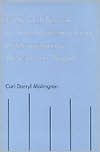

 |

|

Sold Out
Book Categories |
In semiotic terms, fictional space consists of three basic areas of signification: the spaces of the teller, tale, and told. This work uses the terms "speaker," "fictional world," and "reader." Carl Malmgren examines the signifying systems that constitute these three components or "subspaces" and discusses the dynamics of their interrelations. He then applies this theoretical framework to American fiction of the twentieth century and finds that differences in fictional form result from simple transformations performed on the subspaces of the text, transformations that significantly alter narrative ontology and the reader's relation to the texts.
Login|Complaints|Blog|Games|Digital Media|Souls|Obituary|Contact Us|FAQ
CAN'T FIND WHAT YOU'RE LOOKING FOR? CLICK HERE!!! X
 You must be logged in to add to WishlistX
 This item is in your Wish ListX
 This item is in your CollectionFictional Space in the Modernist and Postmodernist American Novel
X
 This Item is in Your InventoryFictional Space in the Modernist and Postmodernist American Novel
X
 You must be logged in to review the productsX
 X
 X

Add Fictional Space in the Modernist and Postmodernist American Novel, In semiotic terms, fictional space consists of three basic areas of signification: the spaces of the teller, tale, and told. This work uses the terms speaker, fictional world, and reader. Carl Malmgren examines the signifying systems that constitute, Fictional Space in the Modernist and Postmodernist American Novel to the inventory that you are selling on WonderClubX
 X

Add Fictional Space in the Modernist and Postmodernist American Novel, In semiotic terms, fictional space consists of three basic areas of signification: the spaces of the teller, tale, and told. This work uses the terms speaker, fictional world, and reader. Carl Malmgren examines the signifying systems that constitute, Fictional Space in the Modernist and Postmodernist American Novel to your collection on WonderClub |